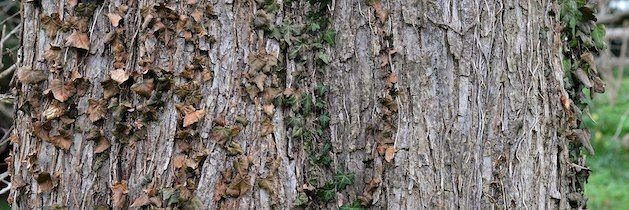Benefits of Slippery Elm Bark*
Ulmus rubra is used internally to:
- Soothe the gastrointestinal tract
- Support the stomach’s natural lining
- Promote regular digestion
- Normalize elimination
- Support respiration and ease cough
- Soothe sore throat
- Promote a balanced microbiome
- Support healthy cholesterol levels
How Slippery Elm Works*
When consumed with liquid, the mucilage in slippery elm thickens and becomes viscous, coating the mucous membranes along the GI tract to help support healthy absorption of nutrients. Research from the University of Maryland Medical Center suggests that slippery elm also causes an increase in natural mucous secretion.
Slippery elm’s mucilage also has a bulking effect that can promote digestion and regularity. At the same time, Ulmus rubra appears to absorb water in the colon, potentially helping normalize watery bowels. Interestingly, slippery elm has been shown to be useful for occasional constipation and diarrhea, as well as reducing occasional stomach discomfort, bloat, and gas.
Ulmus rubra may also soothe the stomach lining, and some lozenge manufacturers include slippery elm in their formulas to soothe throat discomfort.
Side effects: This herb may slow the absorption of orally administered drugs. It is recommended to take slippery elm at least 2 hrs apart from over the counter or prescription drugs.
Should be taken with at least 8 oz of water.
Do not take slippery elm if you are pregnant or plan to become pregnant.
1. Boon Heather, Smith Michael (2009) 55 Most Common Medicinal Herbs: The Complete Natural Medicine Guide Second Edition Institute of Naturopathic Education and Research, CCNM Toronto.
2. Hawrelak J et al. Effects of two natural medicine formulations on irritable bowel syndrome symptoms: a pilot study. Journal of Alternative Complementary Medicine. 2010 Oct;16(10):1065-71.
3. Heydarirad G et al. Medical Mucilage Used in Traditional Persian Medicine Practice. Iran J Med Sci. 2016 May;41(3):S41.
4. Hoffmann D. Medical Herbalism, The Science and Practice of Herbal Medicine, Healing Arts Press, 2003.
5. Godfrey Anthony, Saunders Paul, Barlow Kerry, Gowan Matt (2011) Principles and Practices of Naturopathic Botanical Medicine, Advanced Botanical Medicine. V3 CCNM Press, Toronto.
6. Gruenwald, Brendler, Jaenicke, editors. PDR for Herbal Medicines, 4th ed. Thompson Healthcare, Inc. 2007.
7. Wood M. The Practice of Traditional Western Herbalism. North Atlantic Books, 2004.
8. Masse G. The Wild Medicine Solution. Healing Arts Press. 2013.




